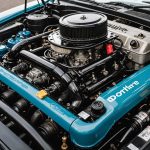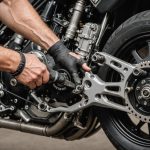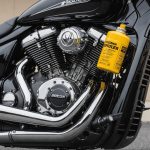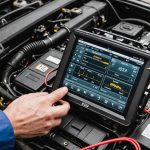Understanding Suspension Springs
Suspension springs are a crucial component in vehicles, particularly key to achieving optimal ride quality and comfort. They play a vital role in absorbing shocks from uneven surfaces, making them essential for smooth urban driving. Their primary function is to maintain the vehicle’s balance and stability by supporting the weight of the car while controlling the motion of the wheels.
Role in Vehicle Performance
The effectiveness of suspension springs directly influences a vehicle’s performance. In urban areas, where roads can be unpredictable, a good quality suspension system ensures a comfortable drive, reducing wear and tear on the vehicle and improving passenger comfort. Springs come in various types, each suited to different driving needs and conditions.
Also read : Top Engine Oils to Extend the Lifespan of UK Heritage Car Engines: A Comprehensive Guide
Types of Suspension Springs
- Coil Springs: Widely used due to their simplicity and effectiveness in most passenger vehicles. They provide a balance between comfort and performance.
- Leaf Springs: Typically found in heavy-duty vehicles, offering excellent durability and load-bearing capacity.
- Air Springs: Known for adaptability, they allow drivers to adjust settings to accommodate varying loads for optimal ride quality.
Selecting the right suspension spring type is essential to enhancing the overall ride quality, especially in the context of demanding urban driving conditions.
Brand Comparisons and User Experiences
Navigating the vast world of suspension brands involves understanding user experiences and performance comparatives to inform decisions. Different drivers have varied needs, depending on whether they prioritise robustness for heavy terrain or ride quality for urban driving.
Also read : Elevate your british car interior: innovative lighting ideas for a distinctive atmosphere
Popular Suspension Brands
Key players in the market for suspension springs include Bilstein, Eibach, and Monroe. These brands stand out for their innovative designs and dedication to enhancing vehicle comfort and stability. Bilstein is renowned for performance-oriented solutions, while Eibach focuses on sportiness and precision, appealing to those who demand refined handling. Monroe offers a wide range adaptable to everyday needs, prioritising durability.
User Reviews and Ratings
User reviews provide a wealth of insight into real-world performance. Bilstein users often praise the noticeable improvement in handling, especially on winding roads. Eibach receives accolades for its sporty feel in urban driving, offering a firm yet comfortable ride. Monroe users appreciate its reliability for daily commutes and the resilience of its components over time.
Performance Comparisons
When comparing suspension systems, consider factors like ride quality, handling, and longevity. Performance metrics reveal Eibach excelling in sharp cornering, whereas Bilstein prioritises overall stability. Monroe strikes a balance, offering dependable solutions for those who navigate the unpredictability of everyday road conditions.
Compatibility with British Car Models
Choosing the right suspension springs for British car models can greatly influence the vehicle’s ride quality and performance. Understanding suspension compatibility involves evaluating each car’s unique vehicle specifications. Each model has specific suspension requirements depending on weight, design, and intended use. Consulting the manufacturer’s guidelines is essential for ensuring optimal compatibility and performance.
Factors to Consider
When selecting suspension springs, consider:
- Vehicle Weight: Heavier models may require sturdier springs for proper support and balance.
- Driving Conditions: Urban environments benefit from springs prioritising comfort and handling.
- Load Capacity: Leaf springs might be suitable for vehicles that frequently carry heavy loads.
Popular British Car Models
Iconic British cars, like the Mini Cooper and Jaguar F-Type, have distinct suspension needs. For example, Minis might require coil springs for versatility, while Jaguars benefit from air springs for enhanced ride comfort. These choices ensure alignment with the vehicles’ dynamic nature, providing both comfort and stability.
Lastly, always verify the suspension specifications within your car’s manual. By doing so, you can choose the most compatible and effective springs, enhancing both safety and the overall driving experience.
Installation Tips for Suspension Springs
Installing suspension springs can significantly enhance a vehicle’s ride quality and overall performance. Choosing between a DIY installation and seeking professional installation depends on your comfort level and the complexity of your vehicle’s suspension system.
DIY Tips
For those confident in their mechanical skills, a DIY approach can be rewarding. Ensure you have the right tools, such as a spring compressor, wrenches, and a hydraulic jack. Start by securely lifting the vehicle and removing the wheels. Carefully release the tension in the springs using the spring compressor to avoid injuries. Replace the springs and verify their correct positioning before reassembling the suspension components.
Professional Installation
Consider professional installation if you’re unsure about the process. This is particularly recommended for complex systems or if your vehicle requires precise adjustments. A professional service guarantees a safe and proper installation, optimizing the springs’ performance.
Whether pursuing a DIY or professional route, remember to align the wheels after installation. Proper alignment is crucial in maintaining the ride quality and ensuring the springs are functioning effectively, especially important for urban driving conditions.
Performance Benefits of Upgrading Suspension Springs
Investing in new suspension springs brings tangible ride quality improvement. For urban drivers, smooth journeys over bumpy terrains become achievable, making daily commutes more comfortable. High-quality springs absorb shocks better, thus reducing stress on the vehicle and its occupants.
Enhanced handling is another significant advantage. A vehicle equipped with superior springs responds promptly and more predictably in various situations, be it tight corners or stop-and-go traffic. This enhanced control means safer and more precise driving experiences, especially vital in cities with intricate road systems.
Long-term benefits must not be overlooked. While the initial cost of upgrading might be daunting, the subsequent savings in repair costs and reduced wear and tear are noteworthy. In urban settings, where roads are often crowded and navigating tough, top-notch suspension springs ensure your vehicle remains reliable and efficient over the years.
Additionally, modern springs designed for urban driving consider noise reduction. The resulting quieter ride adds a layer of tranquility and passenger satisfaction. Ultimately, the investment aligns with both comfort and economic sense, making it a wise choice for those serious about upgrading their vehicle’s performance.
Visual Aids and Resources
Visual aids have become crucial in comprehending the intricacies of suspension springs. Understanding these components deeply affects how we perceive their contribution to ride quality and effectiveness in urban driving scenarios. By incorporating visual tools, the often complex mechanical details become more accessible and engaging.
Installation videos rise as an indispensable resource, particularly for those exploring DIY installations. These guides break down the step-by-step processes, demonstrating the correct use of tools and safety precautions. Watching seasoned professionals manoeuvre suspension springs offers video learning benefits and insight into best practices.
Diagrams complement these videos, serving as reference points for the intricate layouts of various suspension systems. They highlight key components, illustrating how each element works in concert to enhance ride quality. Such visuals ensure users grasp the functional attributes of suspension springs across different models and types, whether coil, leaf, or air springs.
For those seeking more detailed examinations, expert resources like specialized forums and automotive guidebooks offer a deep dive into suspension technologies. Exploring these supports not only cultivates a robust understanding of the mechanics but also empowers individuals to make informed decisions about their vehicle’s suspension upgrades.
Compatibility with British Car Models
Understanding the suspension compatibility of British car models is essential to maintaining superior ride quality. Each model has unique vehicle specifications that dictate the suitable suspension springs needed. Popular British cars, like the Mini Cooper and Jaguar F-Type, require careful consideration of their suspension requirements.
First, reviewing the vehicle specifications for each model is paramount. These specifications help you decide whether coil, leaf, or air springs are most appropriate. For example, coil springs might best suit the nimble Mini Cooper, whereas air springs offer the smoothness needed for the luxurious Jaguar.
Factors such as vehicle weight, intended use, and driving conditions should be considered when choosing springs. Heavier models or those used frequently for towing may benefit from more robust leaf springs. Meanwhile, cars primarily used for urban driving might need springs focusing on agility and comfort.
Always consult the manufacturer’s guidelines for the best suspension compatibility. These guidelines ensure proper weight distribution and handling, ultimately leading to improved performance and ride quality. This diligence not only preserves the vehicle’s integrity but also enhances the driving experience in any urban driving scenario, allowing the unique characteristics of British cars to shine through.











